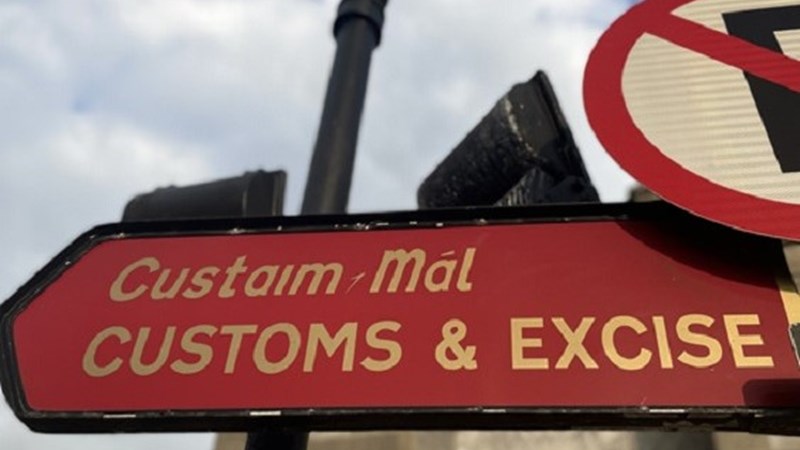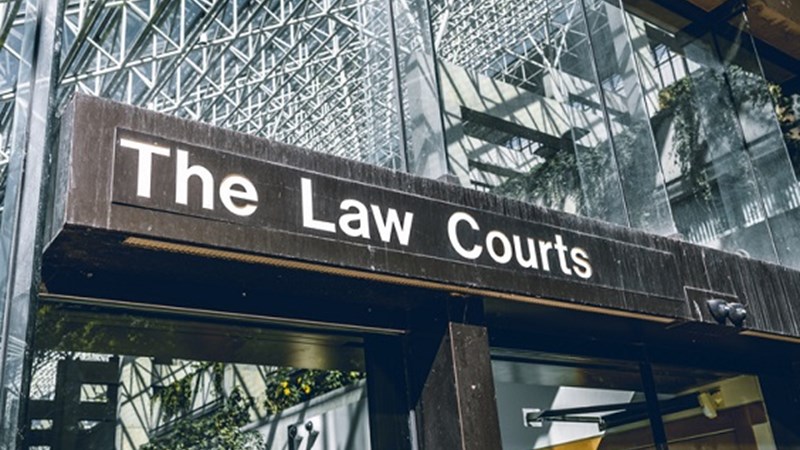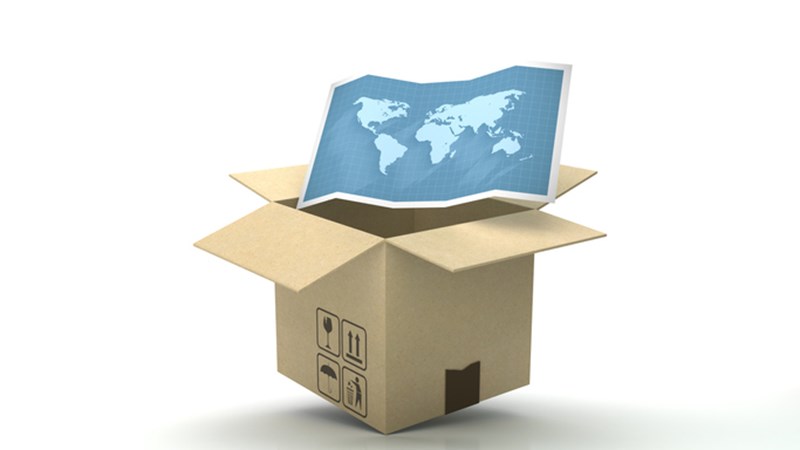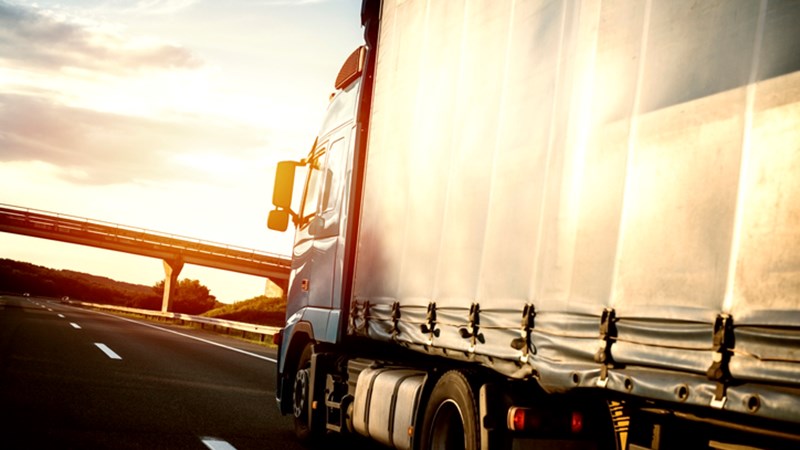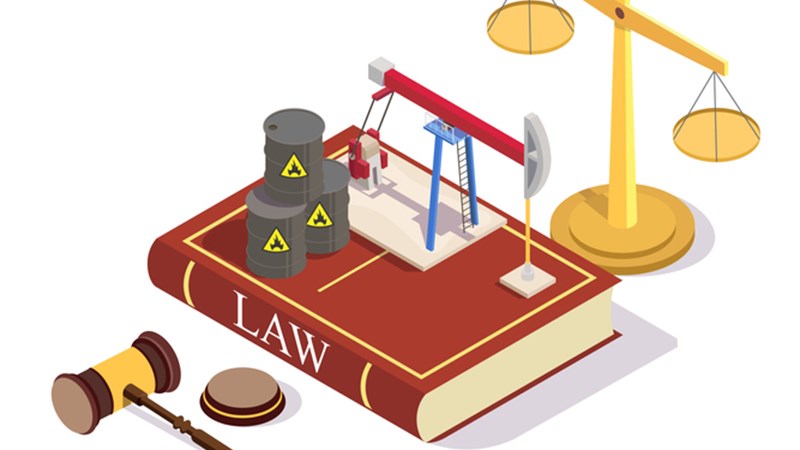Damage under CMR: on migrants, food and aircraft engines
June 2021
Introduction
Pursuant to article 17 paragraph 1 CMR, the carrier is liable for the total or partial loss of and damage to the goods which occurs between the time of taking over of the goods and the time of delivery.
It’s clear that a stolen shipment of laptops constitutes damage. The same is the case when a semi-trailer overturns, causing the carried consignment glass sheets to break. But what about an aircraft engine that may have suffered a shock in transit and it is not certain that the engine was damaged as a result? And what about food that may or may not have become damaged during transport? For example, because migrants were present in the trailer. Or because flies were found in the trailer. Does this constitute damage within the meaning of Article 17(1) CMR?
This question is answered in three different ways in three different judgements. It is useful to discuss what results the various courts reach, what arguments they use and which criterion best suits the practice.
The aircraft engine[1]
Aircraft engines contain sensitive components that absolutely may not be damaged. To prevent damage to an aircraft engine, it is normally moved in a harness. Such harness consists of a frame equipped with shock absorbers and designed to allow the engine to spring freely. In this way, no damage can be caused to the engine by shocks from the trailer on which it is transported. In order for the shock absorbers to work, the frame must not be fastened above the shock absorbers.
In 2013, Tek Trans was commissioned to transport an aircraft engine from the Netherlands to Turkey. The engine was located in such a harness to absorb the shocks of road transport. The harness with engine was placed on the carrier's trailer. On one of the arms of the harness stood the symbol: "NO TIE DOWN". But what did the driver do? He ignored this clear instruction and secured the harness with the engine on it in the trailer with straps. As a result, the shock absorbers did not work and the engine did not spring freely. The driver then set off and, after a ten-day journey, arrived at the Turkish Airlines hangar in Turkey. When the receiver saw that the harness was wrongly fixed, it refused to take receipt of the engine.
No damage to the engine itself had been established at that time, but the consignee did not want to take any risk. Because the shock absorbers of the harness could not function properly, there was a risk of damage due to deformation of parts on the inside of the engine. To check whether the engine was damaged, it had to be returned to the manufacturer, who then had to disassemble, check, repair if necessary and then reassemble it. It was not a cheap job. The cost was approximately US$ 700,000.
The Zeeland-West Brabant District Court was asked whether carrier Tek Trans should compensate this damage, limited to the CMR limit of about €80.000, based on article 17(1) CMR. According to the court, it was clear that the aircraft engine harness was improperly secured and that this created a high risk of damage to engine parts. Because of this risk, the aircraft engine needed to be checked and tested. Without inspection and possible repair, the aircraft engine could not be used. This meant that the aircraft engine had lost value during transport. And the court considers this to be damage as referred to in article 17 (1) CMR.
Incidentally, this idea of the Zeeland-West Brabant District Court finds support in the Parliamentary History of Section 8:388 (2) Dutch Civil Code (the maritime counterpart of Section 8:1103 Dutch Civil Code). This Article governs the calculation of compensation due by the carrier on the ground of late and/or damaged delivery of the goods. The legislative history states: "It is also possible that the goods are delivered in a physically sound condition, but costs have nevertheless been incurred. The value of the goods, as delivered, is then the sound value minus costs, so that the costs must be reimbursed."[2]
Migrants[3]
A completely different case concerned the transport of Danone desserts from Germany to the Netherlands. After the desserts were loaded, the doors of the trailer were sealed. When the driver was resting during the night, he heard some noise. He then went to see what was going on. He did not find anyone with the truck, but found that the seal had been broken. Upon arrival at the unloading address, no anomalies were found in respect of the desserts transported. There were no traces of trampling and the temperatures were fine. Now that the seal had been broken, Danone did not want to take any risks and had the entire shipment of desserts destroyed. According to Danone, the quality and integrity of the shipment could no longer be guaranteed. As a result, the market value or marketability of the cargo was reduced, which had to be regarded as damage within the meaning of Article 17 CMR. And the carrier was liable for that, according to Danone.
According to the District Court of Amsterdam, for damage within the meaning of Article 17(1) CMR, it is necessary that there is a substantial physical change in the condition of the goods. That is not the case here. For this reason Danone's claim is rejected. The court hereby acknowledges that Danone may have suffered damage because it cannot take the risk that the goods might have been damaged in a way that is not visible. But that is not damage within the meaning of article 17 CMR, according to the court.
Flies[4]
Carrier Lesscher had undertaken to transport a shipment of smarties from the Netherlands to Germany. The smarties were packed per 10 kilos in folded bags. Each bag was put in a cardboard box. Those cardboard boxes were closed with paper tape. However, the boxes were not taped shut completely. The flaps of the boxes were slightly raised, creating space under the flaps, mainly at the sides. The boxes were then stacked on pallets and wrapped in foil. On arrival at the unloading address, flies were found on the pallets and also under the foil of the pallets. Further investigation also found pupae and maggots on the floor of the truck. So it seemed that a less than clean trailer had been used to transport the smarties. The investigators assumed that the flies had crawled up through the open underside between the pallet boards and had thus landed on the boxes under the foil.
The consignee refused the shipment. According to him, there was a risk of contamination of the smarties. And since it was foodstuffs, the consignee did not want to take any risks. In addition, the gaps of the top boxes were open, so it was possible for flies to get into the boxes and come into contact with the transported smarties. For this reason, the smarties were processed into animal feed. The question was then whether the carrier was liable for the financial consequences of this depreciation of the smarties.
The District Court of Overijssel remarked first and foremost that because of the food safety requirements for the storage and transport of foodstuffs, it is not necessary to demonstrate actual contamination of the smarties with flies. It is sufficient that there is a reasonable suspicion of contamination. If there is a reasonable suspicion of contamination, the damage shall in principle be borne by the carrier. The court then concluded that there was no reasonable suspicion of contamination. Indeed, no evidence had been produced to show that there were flies in one or more of the boxes, let alone in one or more of the bags containing the smarties. According to the court, there was also no evidence that the contents of boxes and bags had been examined for vermin. The claim against the carrier is therefore rejected.
Damage within the meaning of Article 17(1) CMR
Three judgements concerning the question when there is 'damage' within the meaning of Article 17 (1) CMR. Three judgements, each of which seems to take a different criterion as its starting point. For example, the Zeeland-West Brabant District Court finds that, due to the risk of damage, the aircraft engine has lost value and has therefore been damaged as referred to in Article 17 (1) CMR. Thus, this court seems to take depreciation as its starting point.
In the smarties case, the District Court of Overijssel finds, also with a view to food safety, a reasonable suspicion of contamination sufficient for liability under article 17 (1) CMR.
The Amsterdam District Court concerning the transport of the Danone desserts, on the other hand, is of the opinion that for liability under Article 17 (1) CMR it is necessary that there is a substantial physical change in the condition of the goods.
What is striking is that none of the three courts explains which explanation standard it uses. The CMR Convention does not contain a definition of the term 'damage' used in Article 17 (1) CMR. This concept therefore needs to be explained. Treaty interpretation takes place on the basis of Articles 31 and 32 of the Vienna Convention. On that basis, Article 17(1) of the CMR must be interpreted in accordance with the ordinary meaning of the terms of that provision, having regard to its context and in the light of its object and purpose. In addition to the context, account should also be taken of any subsequent customary application of the CMR which indicates agreement between the contracting parties as to the interpretation of the CMR. This means that the prevailing view in the case law and literature of the contracting states is a primary means of interpretation when interpreting the CMR.[5]
The terms loss and damage in article 17 (1) CMR linguistically point in the direction of so-called material damage to the goods.[6] Based on this linguistic interpretation alone, the Court of Amsterdam seems to be applying the correct standard. This may change if the context and the object and purpose of the CMR are taken into account. The preamble to the CMR shows that the Convention is intended to "regulate the liability of the carrier in a uniform manner". It follows from the system of Chapter IV of the CMR, which regulates the liability of the carrier, that this is aimed at making the carrier liable only for damage that occurred under his care and which has no external cause. In order to guarantee the latter, there is a force majeure clause (article 17(2) 2 CMR) and there are grounds for exemption (article 17 (4) CMR). It follows from this set of provisions that the CMR Convention intends that the carrier shall be liable for damage within his sphere of influence and that he shall not be liable for damage which is beyond his control.
The question arises whether, in view of the above, it is reasonable to limit the carrier's liability to those cases where the goods are physically damaged. This question is all the more relevant now that public law regulations are playing an ever greater role in today's society. The CMR dates back to 1956. Back then, there was no EU with all the associated regulations on (food) safety, such as EC Regulation 178/2002[7] and EC Regulation 852/2004[8]. Partly because of these regulations, transported goods may lose their value according to objective standards, even though they have not been physically damaged. For example, the transport of medicines. Failure to comply with certain public law requirements may result in the goods no longer being released for free circulation. The goods have then lost their trade value, but are not physically damaged. If it is established that the carrier is liable for the non-compliance with those regulations and that as a result those goods have lost their value, there seems to be a strong case for the carrier being liable under Article 17(1) CMR for that loss of value. Of course with due observance of the limitations of article 23 CMR.
Claringbould now thinks so too. In the past, he has argued more than once that a molecular, physical change must have taken place in order for there to be "damage to the cargo" in transport law.[9] But he has recently qualified that view. He now states that if there are public law regulations that prescribe how foodstuffs and medicines must be transported, one can speak of 'damage' if, upon delivery, it appears that these regulations have not been exactly observed.[10] Incidentally, the Zeeland-West Brabant District Court and the Overijssel District Court go a step further than Claringbould. After all, the cases assessed by them do not concern damage caused by breaches of public law regulations, but rather damage which, according to cargo interests, has occurred because there is a reasonable suspicion that the goods have been physically damaged. And this damage, too, may be eligible for compensation, according to the two courts.
Conclusion
Dutch case law has not yet formulated an unambiguous criterion for the question when there is 'damage' within the meaning of Article 17 (1) CMR. The standard applied by the District Court of Amsterdam is most in line with the literal text of Article 17 (1) CMR. However, this criterion soon falls short in cases where it is clear that the carrier made a mistake, that the goods have lost their value according to objective standards as a result of that mistake, while it is not necessarily established that those goods have been physically damaged. In this respect, the standards applied by the Zeeland-West Brabant and Overijssel District Courts are more in line with practice.
This article was also published in the Dutch language in the journal Weg & Wagen: https://www.sva.nl/weg-en-wagen/schade-onder-de-cmr-over-migranten-voedsel-en-vliegtuigmotoren
* * *
[1] Court of Zeeland-West-Brabant, 15 November 2017 (S&S 2018/20).
[2] Parliamentary history Book 8 Dutch Civil Code, art. 8:388 (2), p. 403/404.
[3] Court of Amsterdam dated 18-12-2018, S&S 2020/37.
[4] Court of Overijssel, 6 November 2019, S&S 2020/33.
[5] See also Supreme Court 20 December 2013, S&S 2014/62 (Brinky Bouw/Hazeleger Transporten).
[6] Th.H.J. Dorrestein, Recht van het Internationale wegvervoer, Tjeenk Willink, Zwolle, 1977, p. 213.
[7] Regulation (EC) No 178/2002 laying down the general principles and requirements of food law, establishing the European Food Safety Authority and laying down procedures in matters of food safety.
[8] Regulation (EC) No 852/2004 on the hygiene of foodstuffs.
[9] M.H. Claringbould in: 'Toelichting op de AVC 2002', Stichting Vervoeradres, p. 157-158.
[10] M.H. Claringbould, de Beursbengel, no. 896, July-August 2020, p. 27, where he discusses the judgment of the court of Amsterdam on the migrants and Danone desserts.




